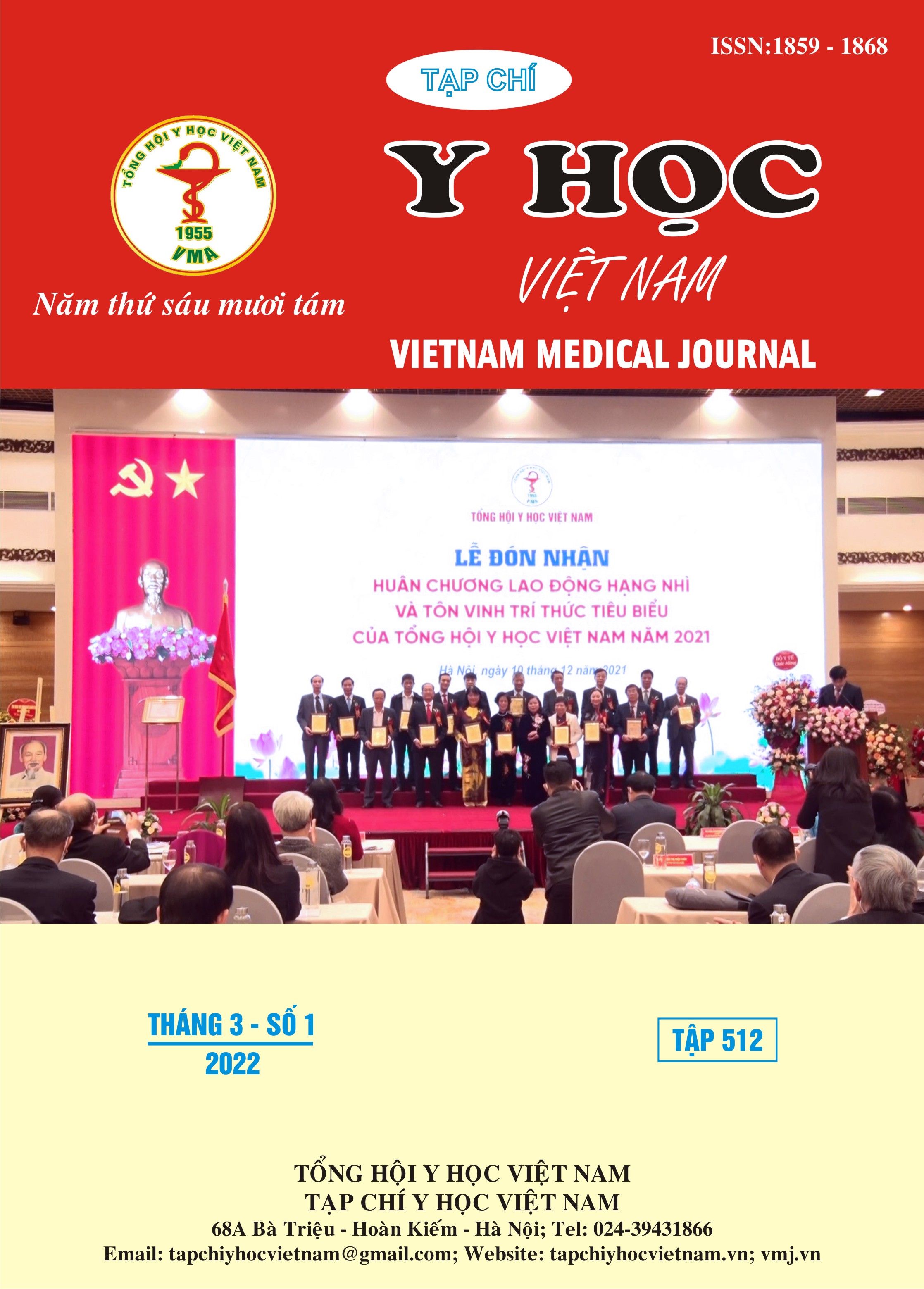APPLICATION OF A DIRECT ASPIRATION FIRST PASS TECHNIQUE IN TREATMENT OF ACUTE ISCHEMIC STROKE AT CHORAY HOSPITAL
Main Article Content
Abstract
Background: Stroke is the second cause of mortality worldwide, there are currently many endovascular treatment techniques for management of acute ischemic stroke (AIS). A direct aspiration first pass technique (ADAPT) has been introduced as a rapid, simple method for achieving good recanalization and clinical outcomes using large bore aspiration catheters in the treatment of AIS due to large vessel occlusion (LVO). Objectives: To assess the safety and efficacy of ADAPT in the treatment of AIS due to LVO at Choray hospital. Materials and Methods: A retrospective analysis of hospital database was conducted on all patients undergoing stroke therapy with the ADAPT technique at Choray hospital from January 2017 to January 2021. Efficacy and safety were evaluated by the variables: revascularization rates (thrombolysis in cerebral infarction [TICI] score), time to revascularization, procedural complications, and clinical outcomes (modified Rankin scale [mRS] score) at the 90‑day follow‑up visit. Results: From the database review, 140 AIS patients treated with ADAPT were identified. The mean NIHSS score on admission was 19.1 and improved to 8.9 at discharged. The average time from arterial puncture to revascularization was 34.9 minutes. TICI 2b-3 revascularization was achieved in 116/140 (82.9%) patients, good clinical outcomes were achieved (mRS 0–2) in 62/140 (44.3%) patients, and mortality rate was 24/140 (17.1%) during follow‑up. Conclusion: ADAPT utilizing large bore aspiration catheters appears to be a fast, simple, safe, and effective method for the management of AIS at Choray hospital.
Article Details
Keywords
A direct aspiration first pass technique, endovascular treatment, acute ischemic stroke, large vessel occlusion
References
2. Yamanashi H, Ngoc MQ, Huy TV, et al. Population‑based incidence rates of first‑ever stroke in central Vietnam. PLoS One 2016;11:e0160665
3. Powers WJ, Derdeyn CP, Biller J, Coffey CS, Hoh BL, Jauch EC, et al. 2015 American Heart Association/American Stroke Association Focused Update of the 2013 guidelines for the early management of patients with acute ischemic stroke regarding endovascular treatment: A Guideline for healthcare professionals from the American Heart Association/American Stroke Association. Stroke 2015;46:3020‑35.
4. Powers WJ, Rabinstein AA, Ackerson T, Adeoye OM, Bambakidis NC, Becker K, et al. 2018 guidelines for the early management of patients with acute ischemic stroke: A Guideline for healthcare professionals from the American Heart Association/ American Stroke Association. Stroke 2018;49:e46‑110.
5. Turk AS, Frei D, Fiorella D, Mocco J, Baxter B, Siddiqui A, et al. ADAPT FAST study: A direct aspiration first pass technique for acute stroke thrombectomy. J Neurointerv Surg 2014;6:260‑4.
6. Gory B, Armoiry X, Sivan‑Hoffmann R, Piotin M, Mazighi M, Lapergue B, et al. A direct aspiration first pass technique for acute stroke therapy: A systematic review and meta‑analysis. Eur J Neurol 2018;25:284‑92.
7. Lapergue B, Blanc R, Gory B, Labreuche J, Duhamel A, Marnat G, et al. Effect of endovascular contact aspiration vs. stent retriever on revascularization in patients with acute ischemic stroke and large vessel occlusion: The ASTER randomized clinical trial. JAMA 2017;318:443‑52.
8. Nogueira RG, Frei D, Kirmani JF, Zaidat O, Lopes D, Turk AS 3rd, et al. Safety and efficacy of a 3‑dimensional stent retriever with aspiration‑based thrombectomy vs. aspiration‑based thrombectomy alone in acute ischemic stroke intervention: A randomized clinical trial. JAMA Neurol 2018;75:304‑11.
9. Alawieh A, Vargas J, Turner RD, Turk AS, Chaudry MI, Lena J, et al. Equivalent favorable outcomes possible after thrombectomy for posterior circulation large vessel occlusion compared with the anterior circulation: The MUSC experience. J Neurointerv Surg 2018;10:735‑40.
10. Turk AS, Turner R, Spiotta A, Vargas J, Holmstedt C, Ozark S, et al. Comparison of endovascular treatment approaches for acute ischemic stroke: Cost effectiveness, technical success, and clinical outcomes. J Neurointerv Surg 2015;7:666‑70.


